One Pillar Pagoda

In the heart of Hanoi, where the dynamic rhythm of city life meets the tranquil essence of spirituality, the One Pillar Pagoda stands as a striking testament to Vietnam's enduring cultural and architectural marvels. This remarkable Buddhist temple, perched on a single stone pillar, has long been a beacon of faith, history, and artistic ingenuity, captivating the hearts and minds of those who visit.
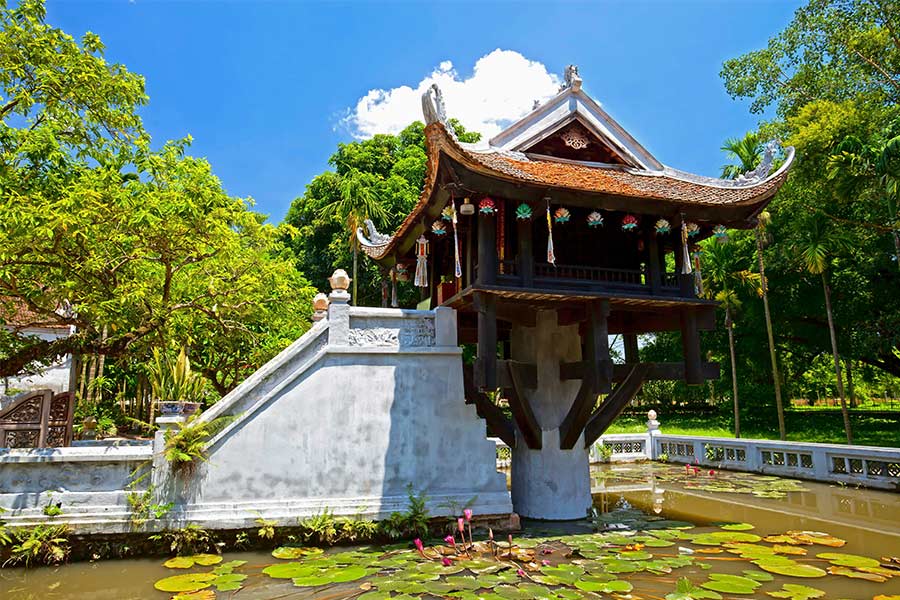
The pagoda is one of the symbols of Hanoi
Stepping into the precincts of the One Pillar Pagoda, you are greeted by an aura of tranquility, where the centuries-old echoes of devotion and resilience resonate in the gentle rustling of leaves and the hum of prayer. This introduction invites you to explore the captivating story of this unique edifice, a place that transcends the boundaries of time and culture to celebrate the beauty of faith and the artistry of the human spirit.
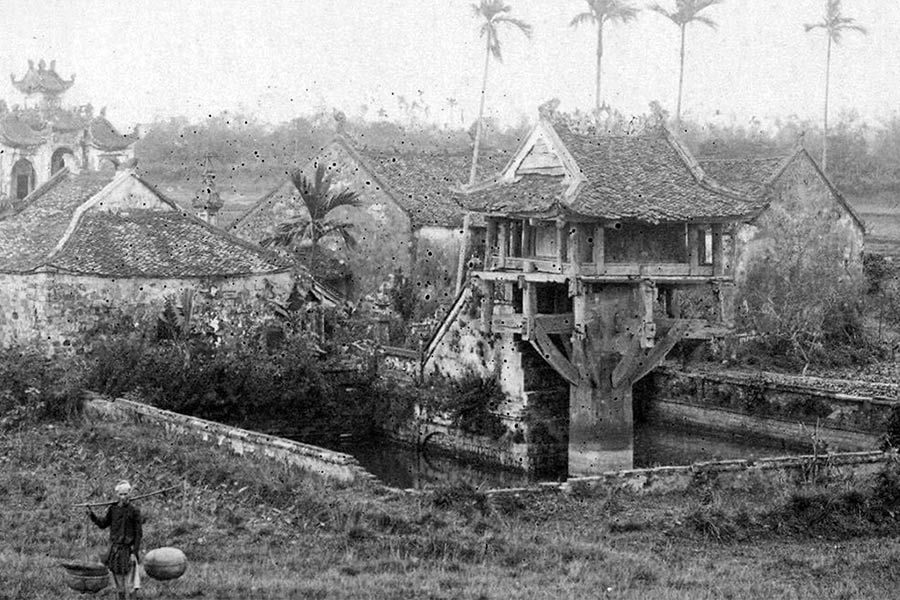
The pagoda dates back to the 11th century
The site is a historic Buddhist temple. Its history dates back to the 11th century during the reign of Emperor Lý Thái Tông (1028–1054) of the Lý Dynasty. According to legend, Emperor Lý Thái Tông had a dream in which he was granted a vision of the Bodhisattva Avalokiteshvara, who handed him a baby son while seated on a lotus flower. Soon after, the Emperor married a peasant girl who bore him a son, and in gratitude for this vision and the birth of his heir, he ordered the construction of the One Pillar Pagoda in 1049.
During its long history, the One Pillar Pagoda has become not only a symbol of Vietnamese Buddhism but also an iconic landmark of Hanoi. It is a popular destination for tourists and pilgrims alike, who come to admire its unique architecture, tranquil surroundings, and spiritual significance. Today, the One Pillar Pagoda stands as a testament to Vietnam's rich cultural heritage and enduring religious traditions, attracting visitors from around the world to experience its timeless beauty and historical significance.
You may like: Vietnam Classic Highlights Tours
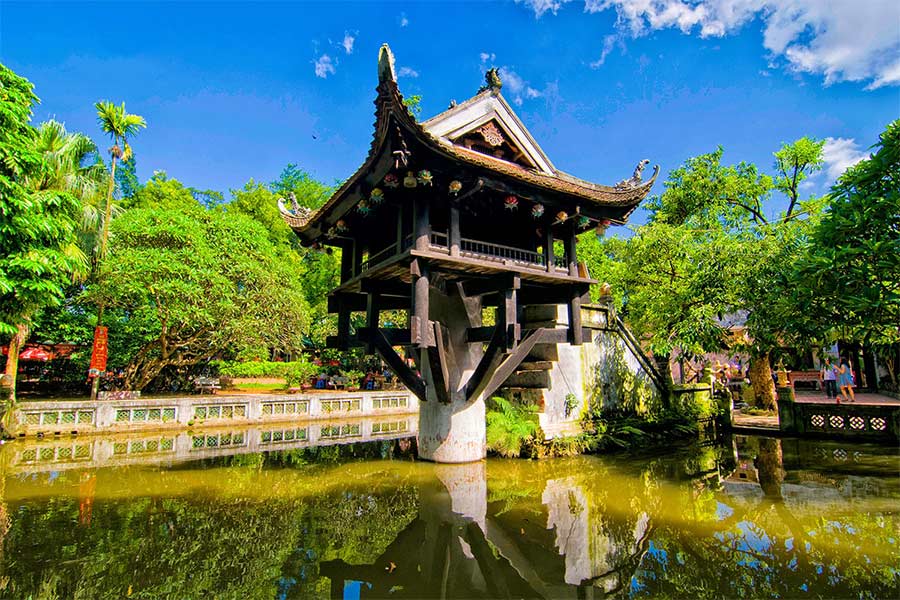
The pagoda boasts a design that is both elegant and symbolic. Constructed in 1049 during the reign of Emperor Lý Thái Tông, its architecture is centered around a single stone pillar, resembling a lotus stem rising from a pond. The base of the pagoda is crafted in the shape of a lotus flower, with intricate details extending outward. The wooden structure atop the pillar features elaborate carvings, reflecting the traditional craftsmanship of Vietnamese architecture. The roof, curved and tiled in layers, evokes the classic style of East Asian design.
Within the pagoda, visitors find a serene shrine housing a statue of the Bodhisattva Avalokiteshvara, to whom the pagoda is dedicated. This architectural marvel stands as a testament to Vietnamese ingenuity and spirituality, captivating visitors with its simplicity and grace across centuries of history.
You may like: Vietnam Short Trips
While the One Pillar Pagoda is relatively small compared to other attractions, there are still several enjoyable activities you can do during your visit.
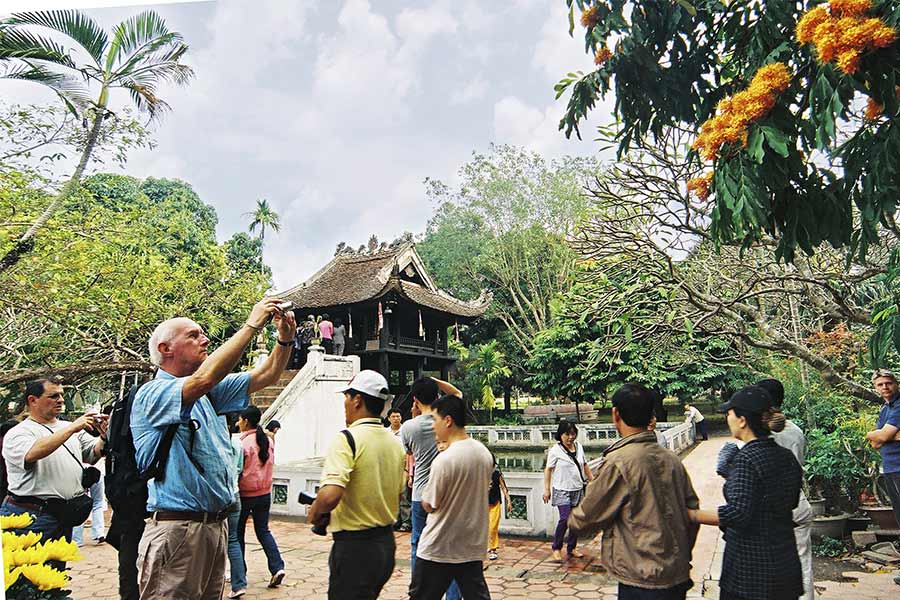
Take your time to admire the surroundings
Explore the Pagoda: Take your time to explore the unique architecture of the pagoda. Admire the intricate carvings and design details of the wooden structure built atop the single stone pillar.
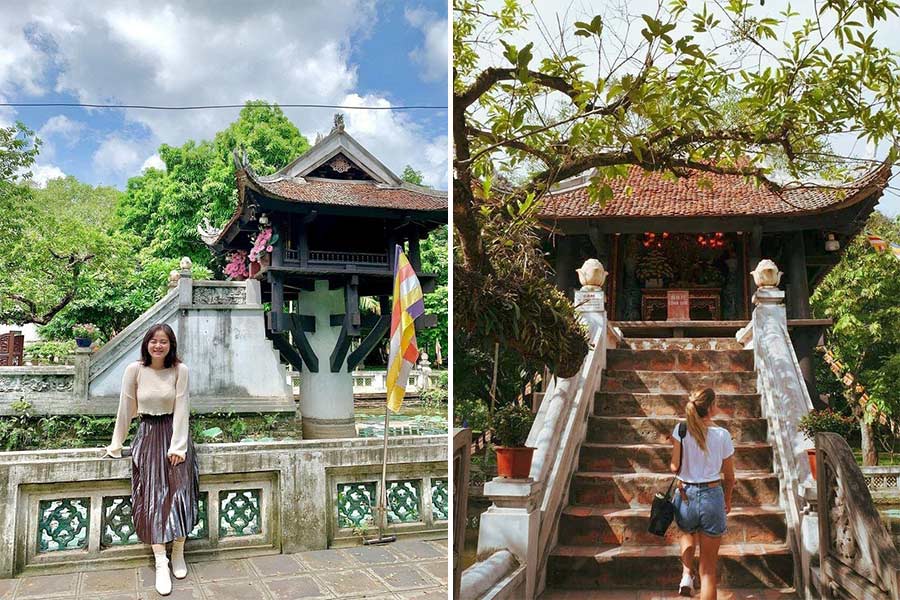
The pagoda offers the perfect scenery for photography
Enjoy the Serenity: Take a moment to soak in the peaceful atmosphere of the pagoda and its surroundings. Sit by the pond or find a quiet spot to meditate and reflect. Moreover, you can take your time to explore the unique architecture of the pagoda. Admire the intricate carvings and design details of the wooden structure built atop the single stone pillar.

You can visit the shrine and pray with your heart
Visit the Shrine: Inside the pagoda, you'll find a small shrine housing a statue of the Bodhisattva Avalokiteshvara. Pay your respects and take a moment for quiet contemplation or prayer.
The One Pillar Pagoda, situated in the Ba Dinh district, is located on a street bearing the same name. Positioned just behind Ong Ich Khiem street, it forms part of the complex housing the Ho Chi Minh Mausoleum and Ba Dinh Square. Consequently, its visiting hours coincide with those of these adjacent sites. The One Pillar Pagoda welcomes visitors daily from 7:00 A.M. to 6:00 P.M.
For Vietnamese individuals visiting the pagoda for worship, paying respects to Buddha, or sightseeing, no entrance fee is required. However, foreign tourists are required to purchase a ticket priced at 25,000 VND (1 USD) per person.
You may like: Vietnam Food Tours
To reach the pagoda, you can use various transportation options depending on your starting point. Once you arrive in the vicinity of the pagoda, follow signs or ask locals for directions to reach the entrance.
Public Bus: Hanoi has an extensive public bus network. You can check the routes online or at a local bus station to find a bus that passes by the Ba Dinh district, where the pagoda is located. Get off at the nearest bus stop to the One Pillar Pagoda and walk the rest of the way.
Motorbike or Bicycle: Renting a motorbike or bicycle is a popular option for exploring Hanoi. Navigate your way to the Ba Dinh district and then use GPS or a map to guide you to the pagoda.
Walking: If you're staying nearby or want to enjoy a leisurely stroll, you can walk to the One Pillar Pagoda if it's within a reasonable distance. Be sure to wear comfortable shoes, especially if you plan to explore the area on foot.

Explore more with Asia King Travel
In conclusion, the One Pillar Pagoda stands as a timeless symbol of Vietnamese culture and history, inviting visitors to marvel at its unique architecture and immerse themselves in the country's rich spiritual heritage. If you wish for further information about the pagoda or other attractions in Hanoi, feel free to contact us, as we are always ready to help you with your plan to travel to Vietnam.